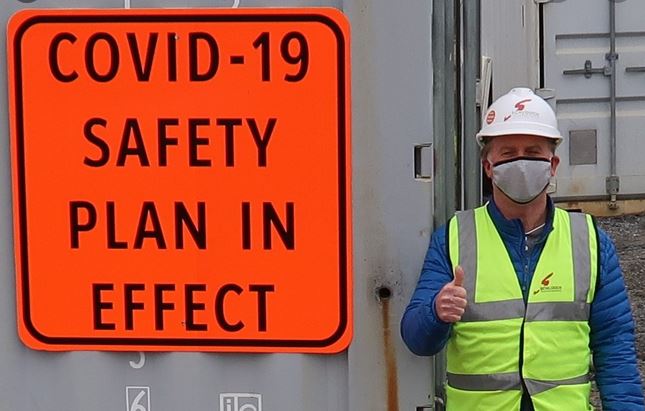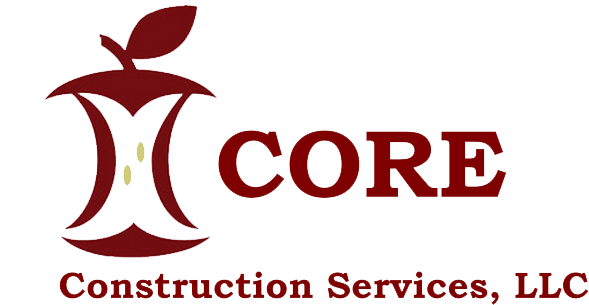
A proactive response for construction planning, design, and management
We all need to understand COVID-19 impacts on capital project and construction programs and the important action owners, contractors, subcontractors, and suppliers can take now to be better positioned when the pandemic subsides.
Implications for construction projects and capital expenditure programs
As the impacts of the novel corona virus (COVID-19) pandemic continue to expand, businesses are struggling both to adjust to new ways of life and to grasp what this will likely mean for their operations—especially their construction projects and capital expenditure programs due to their multi-faceted components. How business and government entities that exist along the construction program life cycle respond to COVID-19 is changing hourly, with more businesses and government entities forced to run with skeleton crews or shut down altogether

There will be delays, loss of efficiencies, and cost impacts because of COVID-19 and related regulatory responses, and there is little to no precedent to help companies understand what the potential future impacts of COVID-19 on the capital project and construction programs may be, or when restrictions may end. Some contractors, subcontractors, suppliers, and sources of labor may not be affected yet because they have not been told to shut down or because they are considered “essential” for government work. However, it is very possible that at some point, work may need to halt due to health and safety concerns. Even if project planning, design, and management do not stop altogether, work will likely be more costly and take more time.
As the COVID-19 virus affects capital project and construction programs and daily business operations, we offer insights as to actions you can take now.
- Considerations for construction programs and efforts
- In the face of COVID-19’s impact on capital project and construction programs, here are important actions that owners, contractors, subcontractors, and suppliers can take to improve control of their construction programs and be better positioned when the pandemic subsides.
- Project Planning and Management
- Currently, there are varying guidelines, orders, and self-imposed restrictions on the planning, design, and management of some construction projects. Guidelines are changing daily and are affecting projects in different ways based on project status, scope, and location. Planning steps to consider include:
- Proactively develop a mitigation plan for potential slowdowns, shutdowns, and project restarts
- Review projects to identify what work may need to be mothballed and how to strategically do so
- Assess what services can be continued off-site to limit schedule delays
- Focus on design and shoring up contracts to limit risks associated with uncertain schedules and be positioned for efficient remobilization once restrictions are eased
- Develop your project startup plan before you slow or shut down, documenting work that has been completed and remains to be completed. The startup plan will carry forward the project strategy and serve as the basis for planning the rest of the project when the project restarts
- Take the opportunity to compile lessons learned so they can be applied to the project going forward
Action to take: Review active projects to determine what stage projects are in and assess what proactive measures can be taken to be ready for a shift in on-site work.
Schedule Assessment
Because many jurisdictions have barred construction, designers, contractors, subcontractors, and suppliers are experiencing COVID-19’s impacts on capital project and construction programs firsthand. Whether your projects have already shut down or are at risk of shutting down, it is critical to document current schedule status. Perform a scheduled assessment or time-impact analysis, including examining the status of material procurement on your projects, to identify latent delays in the schedule. Determine causation and attribute delay as appropriate. Avoid confusion at the end of the project if and when projects shut down about what delays are attributed to forced shutdowns versus delays that existed before the shutdown.
Action to take: Schedule assessment and time-impact analysis.
Resource Planning

Revisit resource plans across project stakeholders (owner, project manager, architect, engineer, contractor, a subcontractor) and identify current key resources as well as those required for the duration of the project—through planning, design, and management. Obtain updated project organizational charts and track work situations of resources on a regular basis. Increased absenteeism of resources due to sickness, the need to care for others, or restrictions on travel may impact project efficiency. Understand resourcing trends on a real-time basis to be able to forecast changes to productivity compared to the plan. Retain records of the resource plan updates for the duration of the project. Prepare for efficiency impacts if stakeholders have to bring in new crews or personnel to backfill or to restart work after a shutdown.
Action to take: Update and track project resourcing plan.
Job Site Rules
Revisit job site rules to understand changes that need to be implemented in response to COVID-19 guidance. Assess the cost impacts of enhanced cleaning, reduced workforce, and other modifications. Understand the potential new liabilities presented by an active job site in the midst of the pandemic.
Action to take: Revisit job site rules, consult with counsel and your insurance broker or specialist, and stay current on local and national restrictions.

Refresh your project risk registers. If you have not previously completed a risk exercise on your projects, do so now. Consider different scenarios for how your projects may play out across planning, design, and management. Include market factors such as disruptions to the supply chain; potential insolvency and bankruptcy of suppliers, vendors, subcontractors, and contractors; and delays in obtaining permits. Assess the costs and benefits of project shutdowns versus slowdowns. Prioritize responses and mitigation activities based on the probability and impact of risks manifesting themselves. Revisit risk registers regularly and consider potential risks and mitigation steps broadly.
Action to take: Refresh risk analysis and consider using simulation tools to assess potential cost and schedule outcomes at various delivery confidence levels.
Risk Analysis
Disputes may arise surrounding existing contractual provisions and applicable statutory requirements. Thus, understanding how project teams have executed and administered contracts will be crucial in the development of claims and defenses to these potential claims.
Review your contracts to understand force majeure clauses and whether pandemics are defined as force majeure events. Assess whether the current conditions meet those definitions. Understand contract terms around delays, time extensions, unforeseen conditions, excusable conditions, and liquidated damages, including the notification requirements in each case.
Review the contracts to understand:
- What constitutes an excusable event
- What impact such an event must have on the affected party
- What steps the affected party must take to claim such an event
- What types of relief are offered to the affected party
- The extent to which a party may terminate a contract for an extended occurrence of such an event
- COVID-19’s impact on the capital project and construction programs have the potential to affect each of these areas in fundamental and differing ways.
Action to take: Review contracts, consult with counsel, and maintain open communication channels with project stakeholders.
Contract Review and Risk Mitigation
Review insurance policies to understand whether the impacts of COVID-19 on your capital project and construction programs are covered. Record events and impacts as specifically as possible to help support claims. For projects with CCIPs or OCIPs, special consideration should be given to the contract and policy language regarding coverage for impacts due to pandemics.
While the delay in start-up and business interruption insurance policies do not typically extend coverage to disease-based outbreaks, there may be new specialty insurance products that cover these types of delays.
Action to take: Review insurance policies and consult with your insurance broker or specialist.
Opportunities in a shifting construction planning, design, and management landscape
Look beyond challenges for Potential Opportunities to advance response, recovery, and delivery confidence:

- Drop-in fuel prices may reduce costs on active projects
- Local lockdown or other orders that reduce public traffic and occupation levels may allow projects to pull more expensive, off-hour work to regular shift work or allow otherwise disruptive work (major street or throughway closures, power and water shutdowns, or work that violates standard noise and vibration limitations) to take place with less encumbrance
- Unexpected availability of workforce or equipment stock in the market may allow for acceleration of your project and reduction of costs for traveling resources
- Leverage full technological capabilities of project management platforms to facilitate remote working and make digital capital products and cloud collaboration the standard on projects
- Revisit procurement strategy and consider whether delaying certain procurement activities (commodities, fuel, service providers, subcontractors) may yield more competitive pricing
- During project shutdowns, revisit or develop project governance playbooks and implement or enhance project management software platforms
- Have plans ready for new projects to take advantage of a potentially slower construction market when conditions start to improve
Next steps for the new normal
As the COVID-19 virus affects capital project and construction programs, project stakeholders should be vigilant and proactive in navigating the uncertain situation. Communication among project stakeholders is critical. Understanding your contractual rights and carefully documenting delays or other impacts can better position you to reestablish operations when your project recovers and business returns to normal.

